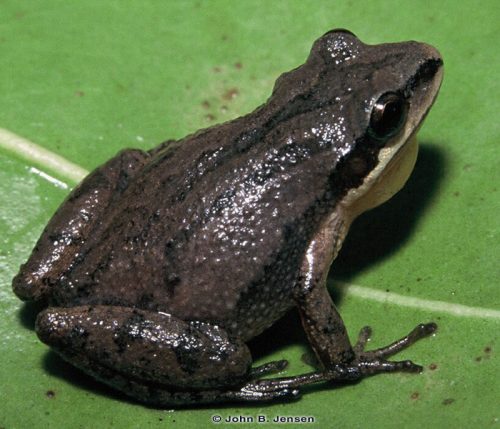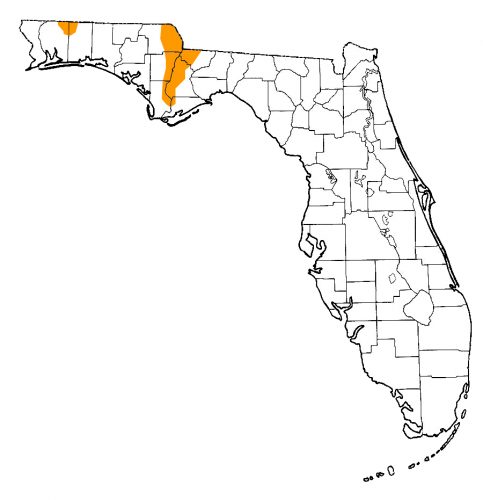Upland Chorus Frog
Scientific name: Pseudacris feriarum

These small brownish frogs are only found in a few places in Florida, but can be common in other habitats around the Southeast U.S. They have excellent camouflage for their leafy habitats, and only call after rain, so they can be difficult to find.
Appearance
Small and bumpy, usually .75 to 1.5 inches long. They are usually brown to gray to reddish, often with three broken stripes down their backs and darker blotches. They also have a distinct wide dark stripe that runs from nostril and eye down along their sides.
Behavior
Small and nocturnal, they are shy and hard to find. They usually only call after rainfall, and are found only in specific habitats, so they are hard to locate to study. They prefer moist, leafy areas that are not far from fresh, standing water to breed in like seasonal swamps or roadside ditches.
Food
Insectivores. They eat mainly spiders, snails, beetles and other small insects.
Habitat & Range
- Mainly the southeastern United States (New Jersey to Florida, and west into Texas and Oklahoma)
- Florida: Found only in very specific habitats in parts of the Panhandle. Native.
- They prefer steephead ravines near wetlands and swamps. They are terrestrial, which means they live among low leafy plants and leaf litter.
Notable
Although this frog is common in a good deal of its range, there are some areas it is considered at risk due to habitat loss from human land development. Until recently, the Upland chorus frog (Pseudacris feriarum) was defined as a sub-species of the Western chorus frog (Pseudacris triseriata), but scientists and researchers have been analyzing DNA and examining the lineage of these frogs.
More info
Learn more about the Herpetology Collection at the Florida Museum.
